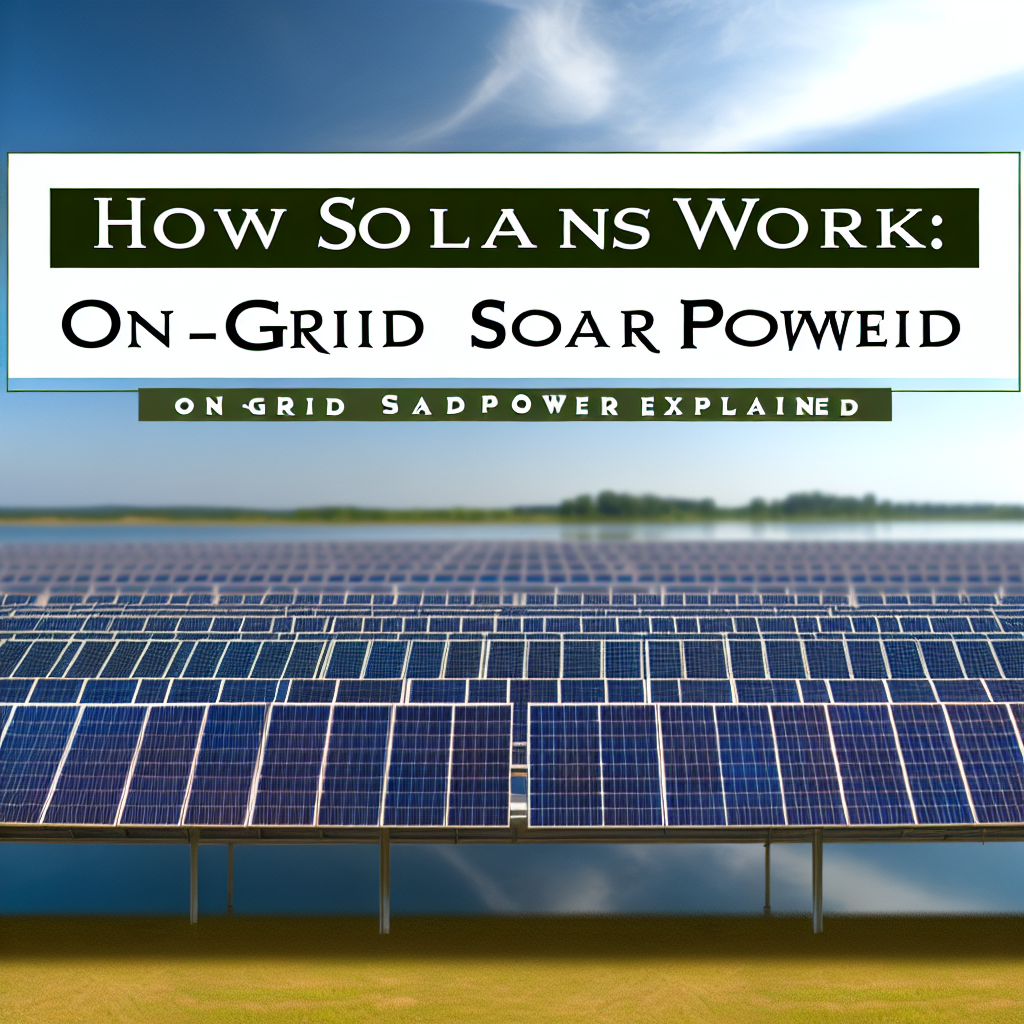How Do Solar Plants Work? | Solar Plant Explained | On-Grid Solar Power System
Solar plants are an innovative and sustainable solution to meet the world’s growing energy demands while reducing carbon footprints. Understanding how these plants operate, particularly on-grid solar power systems, can help you appreciate their role in clean energy production. This article delves into the mechanics of solar plants and explains their on-grid functioning in detail.
How Do Solar Plants Power Our World?
A solar power plant harnesses sunlight through an array of solar panels, which contain photovoltaic (PV) cells. These PV cells convert sunlight into direct current (DC) electricity via the photovoltaic effect. The core components of a typical solar plant include:
- Solar Panels: The primary units that capture sunlight and generate DC electricity.
- Inverters: Devices that convert DC electricity into alternating current (AC), suitable for grid distribution.
- Transformers and Switchgears: Equipments that step up the voltage and ensure safe, synchronized transfer to the grid.
In an on-grid solar power system, the generated AC electricity is synchronized with the grid’s voltage and frequency—this process is called grid synchronization. When sunlight hits the solar panels, they produce DC power, which is transformed into AC power by inverters. This AC power is then fed into the power grid, allowing the energy to be distributed to homes, businesses, and industries. Excess power produced can often be fed back into the grid, creating a system of energy exchange—beneficial both for the grid stability and for consumers in net metering arrangements.
The Role of the On-Grid Solar Power System
The on-grid system is designed to work seamlessly with the existing power grid, making it a popular choice for solar installations. It consists of solar panels, inverters, meter systems, and grid connection infrastructure. Its key advantages include:
- Cost-effectiveness: Since there’s no need for batteries, the initial investment and maintenance costs are lower than off-grid systems.
- Energy efficiency: Surplus energy can be fed back into the grid, earning credits or financial compensation in many regions.
- Reliability: The grid acts as a backup, ensuring a continuous power supply even when sunlight is insufficient or during nighttime.
However, this system requires proper grid synchronization and adherence to local regulations. The inverter’s role becomes crucial in maintaining the stability of the supply and preventing power surges or interruptions. Overall, on-grid solar power systems help maximize solar energy utilization while minimizing operational costs.
Conclusion
In summary, solar plants work by converting sunlight into electricity through photovoltaic panels, with on-grid systems integrating this energy seamlessly into the power grid. They leverage advanced components like inverters and transformers to ensure efficient and reliable supply. As a sustainable energy solution, solar plants play a vital role in reducing reliance on fossil fuels and promoting cleaner energy for the future. Embracing solar technology can benefit both the environment and your energy economy, making it a wise choice for a greener tomorrow.
